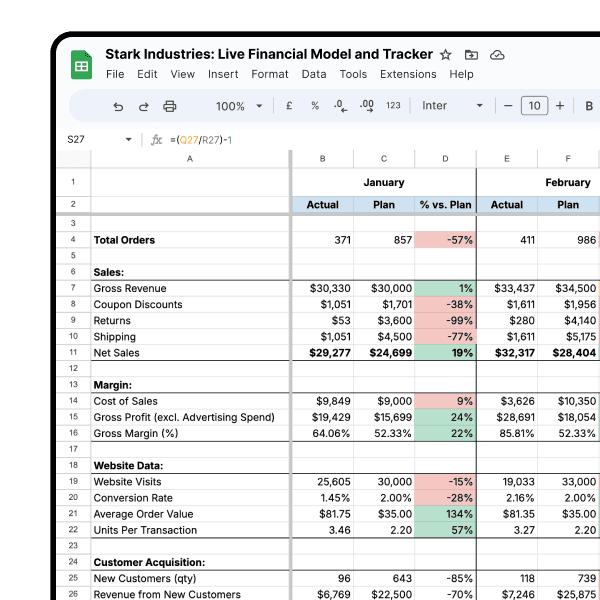Growth Strategies
23.12.2022
TLDR
As the year comes to a close, e-commerce founders and marketers should prepare their marketing budget for the next year. Consider using a combination of top-down and bottom-up approaches to create a balanced budget. Three actionable tips for budgeting include reviewing the Marketing Efficiency Ratio (MER) for realistic goal setting, assessing past marketing strategies' effectiveness, and allocating budgets wisely to high-performing channels. Regularly monitor and adjust the budget and strategy as needed to meet your goals.
With the year coming to a close, this is the right time for e-commerce founders and marketers to start preparing the marketing budget for the coming year. There are many ways to determine your budget—from the top-down depending on your organizational goals or from the bottom-up based on your past performance. The ideal way is doing a mix of both and making the numbers meet midway.
Here are three actionable tips for you to carve out the marketing budget your business needs to be able to see continued growth.
Review your MER to set achievable goals for the year.
The Marketing Efficiency Ratio (MER) of your business shows the overall performance of your digital marketing efforts—how much you need to spend in marketing for every dollar in sales. The formula for MER is total revenue divided by total spend. MER is also sometimes referred to as marketing efficiency rating, media efficiency ratio, or “ecosystem” ROAS.
When setting your overall marketing budget, the best way to calculate what you need is by using MER. Looking at historical MER allows you to understand how effective your overall marketing efforts were previously, and set realistic goals. Other benefits of this include:
Avoiding the problem of sales attribution by channel, as each platform will report their own numbers and they often do not add up in the end; and
Taking a more omnichannel marketing approach to your budgeting efforts, bearing in mind that a customer will often hit several touchpoints along their journey.
Review your marketing strategies over the past year.
As you close your financials and sign off on marketing reports, this is the perfect time to go back to the drawing board. How effective were your marketing strategies over the last 12 months? In order to assess this, ask yourself:
Was the business able to hit the KPIs set for the year?
If so, were they consistently reached throughout the year, or is your revenue prone to seasonal swings?
Which sales periods are most relevant and profitable for your business?
What was the profit margin for your business over the whole year, after accounting for cost of goods as well as marketing costs?
By asking the right questions, you can make adjustments necessary for the coming year, including when to allocate more or less of your marketing budget.
How will you determine the effectiveness of your marketing strategies? For this, you want to look at your Customer Acquisition Cost (CAC). By looking at CAC per marketing channel, you can determine which channels are performing better than others. You want to put more of your marketing budget into channels with lower CAC, so that you increase the effectiveness of your ad spend.
As a general rule, your CAC should be 1/3 to 1/5 of a customer’s Lifetime Value (LTV). As a young store, Airboxr can help you estimate your LTV easily, without any calculations needed on your part.
Improve your DTC game. Sign up for weekly tips.
Allocate budgets to different channels and strategies.
From the previous step, you will get a sense of the channels that worked well for you. Look at which channels drove more sales and allocate a larger portion of your budget to those channels. Don’t overlook organic channels like SEO and social content—you may need to allocate budget to content writers and designers.
It’s a good idea to start with a broad allocation of your budgeted dollars to different channels, but don’t keep yourself tied to those allocations when you start executing. As channel performance changes across the year, make sure to update your budget allocations too.
Once the marketing plan is in motion, it is important to regularly monitor and track the results to see if the business is on track to meet its goals. If necessary, you can adjust your marketing budget and strategy as needed to ensure that it is achieving the desired results.


